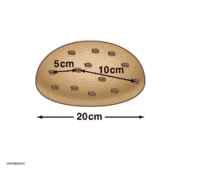
Photo from wikipedia
Spatial proximity, physical similarity and multiple linear regression are implemented on 266 snowmelt dominated catchments located in Quebec, Canada. This paper evaluates: (1) the impact of the parameter set dimensionality… Click to show full abstract
Spatial proximity, physical similarity and multiple linear regression are implemented on 266 snowmelt dominated catchments located in Quebec, Canada. This paper evaluates: (1) the impact of the parameter set dimensionality by comparing 6, 9 and 15 free parameters structures of the GR4J hydrological model coupled to the CemaNeige snow model and; (2) the impact of the parameter set calibration method by comparing SCE-UA, CMAES and a uniform random sampling procedure. Results show that physical similarity performs better than spatial proximity and that both methods outperform multiple linear regression. Among 12 catchment descriptors, the percentage of water and geographical coordinates are the most relevant for this region. Results show that 9 free parameters are globally sufficient to regionalize the snow covered catchments but that 15 free parameters are necessary for lower quality time-series or catchments dominated by arctic or subarctic climates, high water storage capacity or low annual precipitation. Compared to complex models, parsimonious models are more robust in regionalization but their lower performance in model calibration results in lower performance in regionalization. Results show a relationship between the robustness of the parameter sets generated by the calibration procedures and their dispersion within the parameter space. Uniform random sampling is the most robust calibration method but shows an overall performance that is similar to both optimization algorithms because of its weaker performance in model calibration.
Journal Title: Journal of Hydrology: Regional Studies
Year Published: 2017
Link to full text (if available)
Share on Social Media: Sign Up to like & get
recommendations!